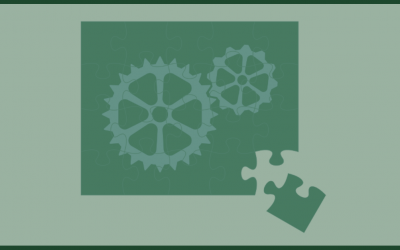IT outsourcing contracts, as noted in a recent blog post, should be treated as living documents -- continuously evaluated, refined, and optimized over time. Not only do business conditions continually change, but it’s also important for outsourcing customers to...
PDM/PLM-Product Data and Lifecycle Management
How Code Reviews Reduce SDLC Costs
Bugs can be introduced anywhere in the software development lifecycle, from the early stages (requirements gathering etc) right up to the final shipping of the project. The most expensive types of bugs to fix are those introduced earliest and fixed latest. For...
4 Reasons to Use Static Analysis on Your Codebase
All of us who work in software development want the products that we release to be high quality, and also low cost to maintain in the field. This is no big revelation; it’s common knowledge, and it’s common sense. It’s not clear that there is any silver bullet in...
Bad Changeset Management, Release Management Can Be Disastrous for Your Company
The core activities of configuration management (i.e. changeset management and release management) are essential to control the changes made to a system and to administer the release of its different versions. However getting it wrong damages your brand, customer...
Five Steps to Take if Your IT Outsourcing Agreement Goes South
IT outsourcing relationships can be fraught with challenges, ranging from communications breakdowns between client and provider to issues surrounding performance. If an IT outsourcing agreement isn’t meeting your company’s expectations (e.g. SLA targets are missed;...
SDLC Basics: The Vision Statement
In the Beginning In the beginning, there was an idea. The idea took shape and became a project. The project became an application and the application got used. Or maybe it didn't get used. Maybe it was completely the wrong application for the business. Or maybe it was...
The Project Management Skills Gap
When it comes to product innovation and project development, the role of the project manager cannot be underestimated. That's why it's important to take an objective look at the skills and resources available in your organization and determine if a skills gap exists...
Avoid Budget Overruns and Unhappy Customers with Better QA and Testing
Any project can be divided into different parts including requirements gathering, design, implementation, documentation and so on. One key aspect of the project lifecycle is quality assurance (QA), but it's often overlooked. Although almost all project managers...
Continuous Integration Best Practices—Part 1
Continuous Integration is a leading software development methodology whereby new development is constantly being submitted and tested against the main body of work. The goal being rapid feedback on incremental changes, resulting in lower maintenance costs and higher...
Continuous Integration Best Practices—Part 3
As I noted in "Continuous Integration Best Practices—Part 1" and "Continuous Integration Best Practices—Part 2" there are 10 best practice principles associated with Continuous Integration and in this previous articles, we covered the first six. In this article, we...
Continuous Integration Best Practices—Part 4
As I noted in other articles in this "Continuous Integration Best Practices" Series (click here for Part 1, Part 2, or Part 3", there are 10 best practice principles associated with Continuous Integration and in this previous articles, we covered the first eight. In...
What Do Late Product Launches REALLY Cost?
Your engineering team’s product launch date just slipped a week. Should you spend $20,000 on an outside engineering service to get the release back on schedule? In these situations, making the right decision quickly requires reliable information and analysis. As more...



